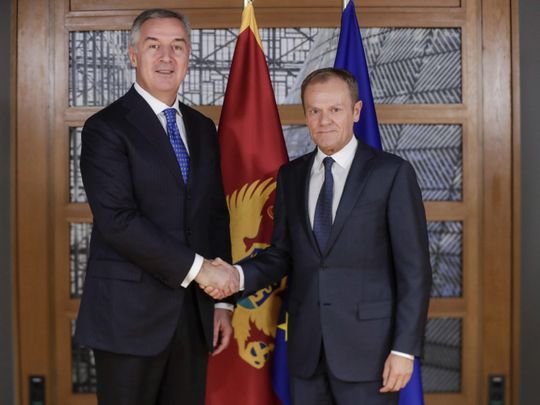
Decades ago, while studying the root causes of the First World War, I had an elderly history teacher who was a friend of clichés — easy tools to explain complex concepts to secondary students uninterested in the finer points of early-20th century imperialism and its effects on contemporary European civilisation.
That teacher would describe the Balkans as the tinderbox of Europe — an apt descriptive cliché given that the assassination of Archduke Franz Ferdinand, heir to the Austro-Hungarian throne, in Sarajevo on June 28, 1914, put the chain of events into motion that resulted in the outbreak of the First World War a month later.
Certainly too, the events of the bloody Balkan wars in the early 1990s, following the break-up of the former state of Yugoslavia, serve as a recent reminder of the volatile nature of that region. Yes indeed, a tinderbox. And right now, things are rather restive across that patchwork of states that includes Bosnia, Croatia, Serbia, Montenegro and a Kosovo carved out of Serbia, but not fully recognised by all at the United Nations.
For the past number of weeks, the capitals of both Montenegro and Serbia have witnessed large-scale demonstrations by protesters who, despite being in two separate nations, largely are voicing anger against endemic government corruption, moves against the freedom of journalists and in support of policies that will move the nations closer to membership of the Europe Union. Yes, the Brits want out, the Balkans want in.
Montenegro is a small nation, less than 14,000 square kilometres in size and with a population of about 620,000 hugging the Adriatic coastline between a strip of Bosnia and the bulk of Albania. It’s a member of the North Atlantic Treaty Organisation and is hoping that it will be admitted to the EU under the next expansion that could come by the time European parliamentary elections roll around again in 2024. There are elections due at the end of May, and 2024 would be the earliest that would be possible.
But for four consecutive weeks now, thousands of protesters have gathered in the small Montenegrin capital of Podgorica, calling on President Milo Dukanovic to step down. They are angry over what they see as his abuse of office, widespread corruption and influence peddling. Things have been bubbling away there for months now, and one opposition lawmaker was jailed for two months as he left the steps of parliament on charges that stem from his anti-corruption allegations.
It’s not the type of political and judicial activity that meets the European Union’s required standards for democratic freedoms, and the protesters are angry that the heavy-handed actions of the government and Dukanovic are hurting Montenegro’s membership application to join the Brussels eurotocracy.
Adding to the febrile atmosphere too are elements of opposition that want to see Montenegro out of Nato, reject the EU and move closer instead into the Kremlin’s orbit — elements of the opposition that are in a small but vocal minority.
The protesters want Dukanovic, his deputy Dusko Markovic, Supreme State Prosecutor Ivica Stankovic and the chief prosecutor against organised crime, Milivoe Katnic, to resign.
The rallies started after Dusko Knezevic, a former political ally of Dukanovic, accused the president and his Democratic Socialists of murky financial deals and corruption.
Autocratic rule
Aged 57, Dukanovic has been a central figure since the nation won independence from the former Yugoslavia in 1991, either serving as its president or prime minister. For the moment, the protests are continuing and Dukanovic and the others aren’t going anywhere.
Just over 450 kilometres away in the Serbian capital Belgrade, there are similar protests — demonstrations that have been ongoing for the past 13 weeks. The protests want to force the resignation of President Aleksandar Vucic and end the rule of the Serbian Progressive Party (SNS), who the protesters say have imposed autocratic rule. Despite the growing protests, Vucic is defiant and gave the protesters their slogan when he said that even if five million took to the streets against him, he would still stay in power. Now protesters carry placards reading “1 of 5 million”.
The three months of protests were spurred by an attack on opposition leader Borko Stefanovic and are being organised in the Alliance for Serbia, an umbrella protest group representing some 30 organisations and parties. As well as demanding his resignation, they are demanding more media freedom and more coverage of opposition grounds by the state broadcaster. Even though freedom of expression is guaranteed under Serbia’s constitution, the demonstrators say it’s simply not happening.
Vucic was elected in September 2017 and favours a more nationalist stance on policies, one that would see Serbia look to Moscow rather than Brussels. Even though there is an application in Brussels for EU membership, that’s not likely to happen before 2025. For the protesters on Belgrade’s streets, that can’t be soon enough.







